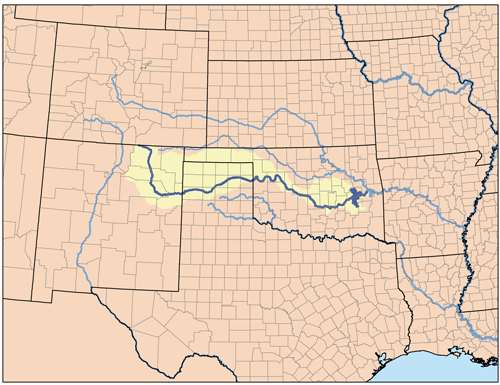The pursuit of geo-oddities is a passion of mine, but not my only one. History, and by extension personal history (genealogy) is another. Sometimes the two intertwine.
I’ve long known of a family line tangential to mine that associated with the early history of Canadian, Texas (map). Their involvement began with the founding of Canadian in 1887 and extended into the early 20th Century.

I always considered Canadian an unusual name for a town so completely isolated and removed from anything resembling Canada. However, I’d never examined its etymology either. I guess I was curious but not quite that curious. Maybe Canadian settlers wandered down to the Texas Panhandle around that time and founded a town.
I Was Wrong
Well, maybe not completely wrong. Nonetheless, the situation is entirely more complicated than my mental supposition led me to believe. I’d forgotten about it frankly, until I poked around a map of Oklahoma recently and spotted Canadian County. It wasn’t that far away from Canadian, Texas; maybe 150 miles straight-line.
Certainly two Canadians so far away from Canada yet so close to each other stood a good chance of being related. Then I noticed a river valley squiggling between the two points and that proved to be the solution.
It’s About the River
Canadian, Texas; Canadian County, Oklahoma; and the less-populated Canadian Township and town of Canadian found elsewhere in Oklahoma are all named after the Canadian River. I also found additional examples through the U.S. Board on Geographic Names, one of my favorite resources.

The Canadian River starts in northeastern New Mexico and cuts across the Texas Panhandle. Then it meanders through much of Oklahoma’s girth before joining the Arkansas River. Finally as part of the Arkansas it marches towards the Mississippi River and into the Gulf of Mexico. It’s not more than a string of mudflats and quicksand for much of its length.
Theories
Nobody really knows how the Canadian River got its name. Local inhabitants offered several theories over the years. Variations appeared all over the Intertubes presented as fact.
- It’s similar to the Spanish word cañada which can mean glen or gully. And, well, Spanish people were all over New Mexico and Texas. But the theory has a major flaw. No evidence exists to show that any actual Spanish-speaking visitors describing the river this way.
- The river takes a northeastern jog as it cuts across the Texas Panhandle. This leads some to speculate that maybe an early explorer thought it flowed into Canada. Evidence is lacking and it seems rather far-fetched.
- French-Canadian trappers and traders made it down here during the first half of the Eighteenth Century. Perhaps they wanted to honor their homeland.
A Closer Look
The Oklahoma Historical Society provided the best analysis of the etymology that I could find. They published it in their Chronicles of Oklahoma in 1928. The article provided circumstantial evidence that discounted the first two theories and promoted the third.
“These Creole French traders, trappers and voyageurs left their indelible impress upon the geography of Oklahoma, as the names of many rivers, creeks and mountains of the state bear abundant witness to this day, even though some of these have been more or less corrupted since the disappearance of the French language as the prevailing tongue of trade in this region, more than a century ago.”
The article also mentioned the Illinois River as another example. I don’t mean the major tributary of the Mississippi River found in the state of Illinois. It’s a different one that springs from the Ozark Mountains in Arkansas and flows into northeastern Oklahoma. The theory is that French-Canadians from Kaskaskia (see my Kaskaskia page) affixed the name to a new waterway they encountered during one of their trading expeditions. The same might apply to the Canadian River, which already had its name by the Eighteenth Century. Thus by extension it conveyed to many things Canadian in New Mexico, Texas and Oklahoma.
Is it an artifact of a vast trading network that covered most of the continent interior? Or is it an odd coincidence? The answer remains unknown.

Leave a Reply